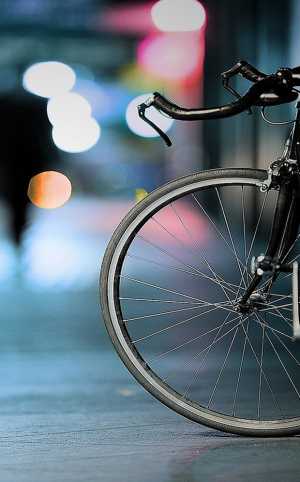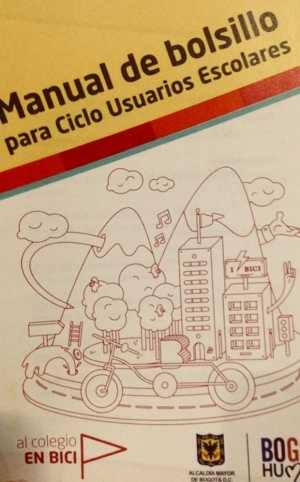About Bogotá, the capital of Colombia, you can say hundreds of facts, give thousands of figures, tell hundreds of stories, we would have no end. But, Bogotá is a city of bike pathways.
A bit about Bogotá
Let’s start by saying that Bogotá is not a small city. On the contrary, it is a monster. It is divided into 20 locations and these are grouped more than 1900 neighbourhoods that are in the urban area.
It has a length of 33 km from south to north, and 16 km from east to west. It is estimated that it has a population of 7,150,000, this without counting the “floating population” (people who live in the streets or tourists). It is the political, economic, administrative, industrial, artistic, cultural, sports and tourist epicenter of the country.
This means that the issue of mobility is crucial. And, who had the pleasure of growing up in this city, we know that transportation is a critical issue. The city is always stuck, the traffic jams are eternal, you have to plan all activities since you can’t go to several places on the same day because traveling through Bogotá is complicated.

A study issue by the Engineering Faculty at Universidad Libre regarding bike users in Bogotá revealed important information. According to the study, Suba (locality) is the place where more trips are made using this means of transportation with more than 73, 000 trips per year. This is followed by Engativá (locality) with 64, 500 and Bosa (locality) with 62,000 trips.
Bike pathways were created
Now, the city and its mobility problem has been changing for a while. That is, the change began decades ago.The (ciclorutas) bike pathways were created.
The pathways are an urban infrastructure of exclusive lanes for the circulation of bicycles. It has a total extension of 440 kilometers.

There are 30 routes, of which five have an extension of more than 20 kilometers.
The longest is the North-Quito-South corridor with 26 kilometers and a half, all are interconnected in some points, facilitating the flow of cyclist transport.
The bike paths were designed taking into account the morphology and topography of the city. From north to south the city is relatively flat but there are slopes from east to east.
There are three types of networks. These are:
The main network: It unites directly and expeditiously the city.
The secondary network: It feeds the main network. It connects housing centers or attraction centers with the main network.
The complementary network: Links and gives continuity to the network.
Ok, until now everything sounds great. But you have to be honest, this road to change has not been easy.
Cycle routes and cyclists have been affected in recent years, like the rest of the city, by criminal gangs. The sectors that have been afected the most are: Usaquen, Suba, Kennedy, Tunjuelito and Ciudad Bolivar, where cyclists suffer from the theft of their bicycles.
The problems
Although the city has one of the most extensive routes in Latin America, it is common to see many bicyclists traveling through the streets, generating a risk factor. But, why avoid the bike paths? Many cyclist answer the same thing: using this routes can be a problem and not a privilege.
The reason for the problem is that there is a lack of lighting, there are gaps, sewers and lack of security.
As a result, those who ride bicycles have created applications to report alerts about dangerous areas for their community. When reviewing their results, most coincide with the statistics of the authorities.

Changing the subject a bit, there are other issues regarding our city on two wheels. One of them is that because of the lack of school routes the “To school by bike”district program has been created.
Another problem is the issue of parking. It is very simple, there aren’t any! This means that there are not enough for the number of bicycles that are used. Besides this, they are not safe places.
As for the insecurity of bicycle parking lots, we should highlight some of the safest in the city. These are:
Bavaria: It is located in the main headquarters of the company and offers 99 bicycle spaces.
Santa Fe Shopping Center: It is a free parking lot open to the public in the Mirandela (Suba) sector. It offers 600 spaces, excellent signs and excellent security.
Santa Fe Foundation: parking open to the public and has 50 bicycle spaces.
Parking International – La Enseñanza: It is open to the public, located on 72nd Street with Carrera 8 (Chapinero). It has 40 spaces for bicycles and three access areas.
Universidad de Los Andes: private parking and for free use by students. It has 440 spaces for bicycles, a quota much larger than those assigned for cars.
On the other hand, the subject of accidents is intense. For example, in 2017, The Mobility District Secretariat reported that about 59 people lost their lives. Unfortunately for 2018, 63 deaths were reported.
Solutions with a future
This is a sustainable school mobility initiative in which the Secretariats of Education and Mobility work hand in hand. ‘To school by bike’ has made more than one million trips by bicycle to go to and from school.

This means that Bogotá is a pioneer city in the sustainable school mobility, and in the massive use of the bicycle. This is an initiative that is worth strengthening. It is a way to travel safely through the city, to grow happy, healthy and appropriating all the scenarios offered by the city.
On the other hand, the National University (Universidad Nacional) has designed a vehicle similar to a rickshaw. The objective is to improve the environment and promote sports. The vehicles have capacity for six children, and have a safety belt and helmet, stop lights and luggage storage on each side.
After saying all this we have the following. The issue of mobility is one that most concerns citizens, 61% believe that their travel times have increased. In addition, the experts in the matter assure that road safety, motorcycles and the sustainability and quality of public transport are key. 2018 was the worst year for traffic in Bogotá. This is a complicated city, difficult, charming, loved and detested by many but what is certain is that living on two wheels is a charm.


